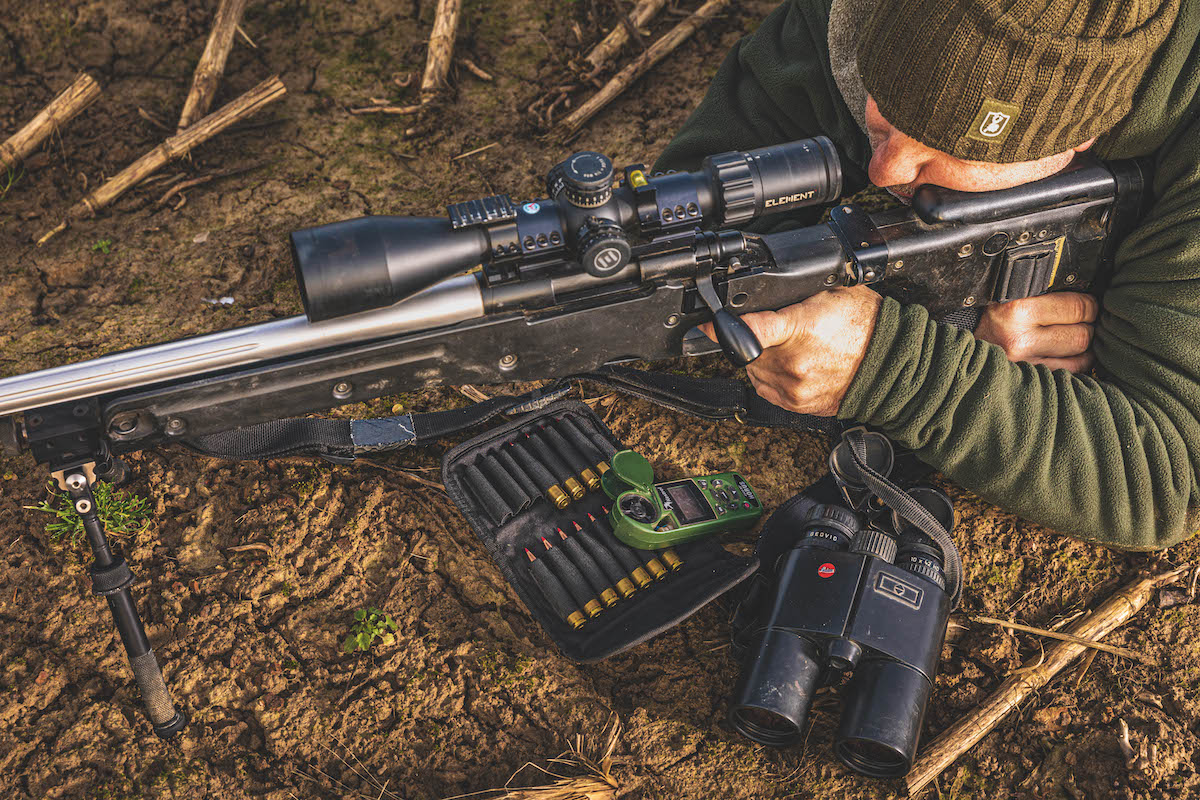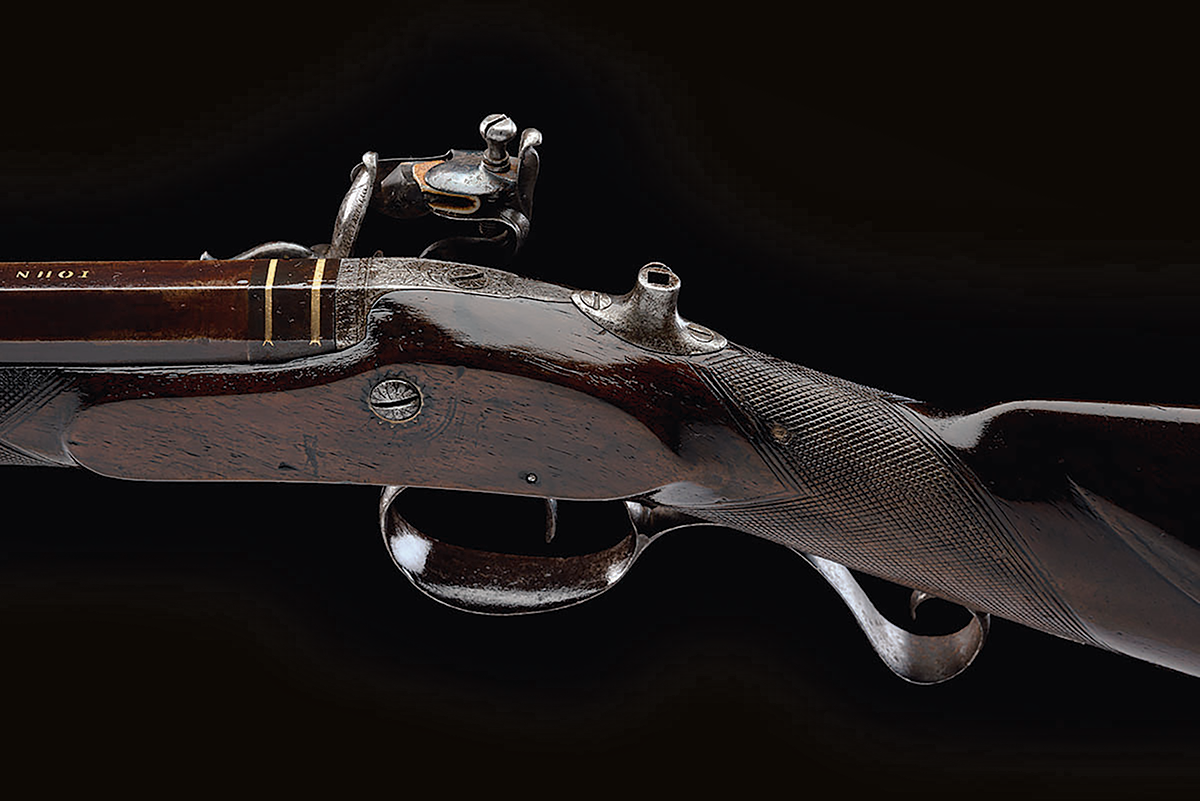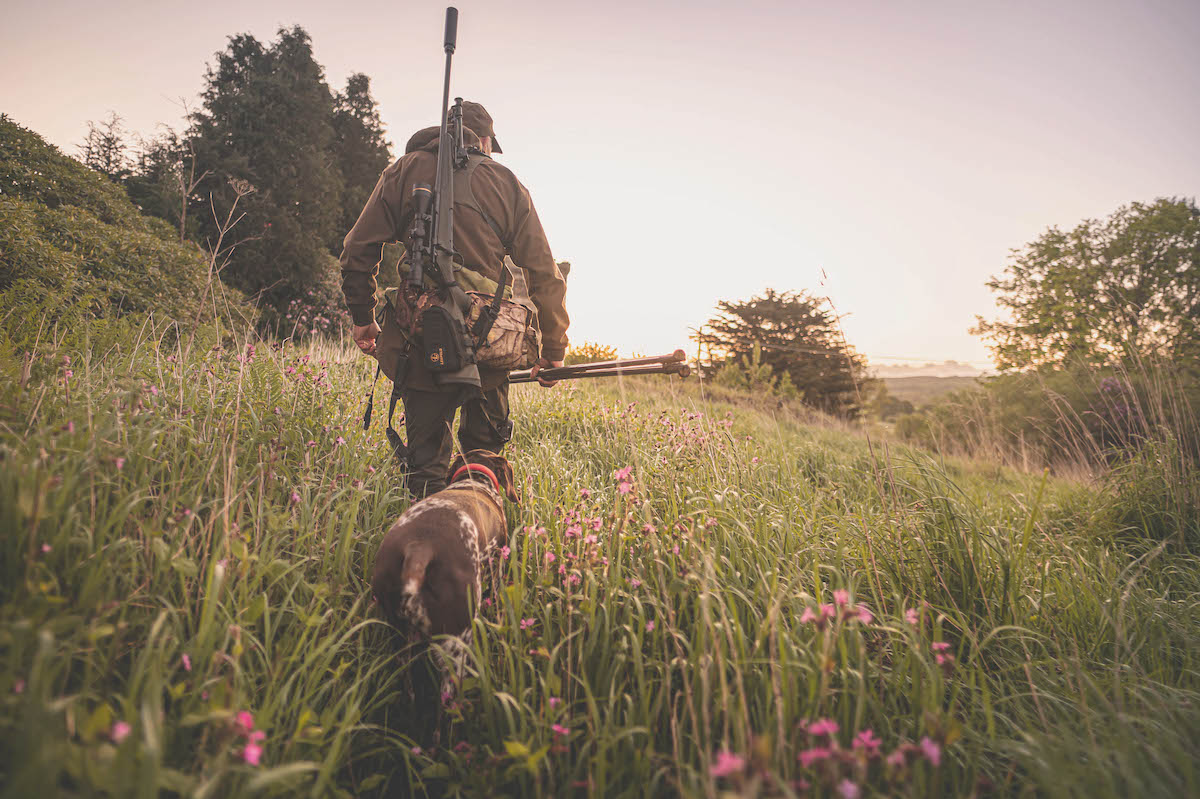Best fox calibres for catching Charlie
The individual circumstances of each job should guide your decision when choosing the most suitable ammunition, advises Mark Ripley

Mark finds his .260 rifle perfect for daytime foxing at long ranges
Fox calibres in action
The rangefinding binoculars showed a distance of 536 yards. I glanced to my left to check the faint breeze caressing the longer blades of grass next to me and felt confident that only a slight adjustment would be needed to send the 143-gr Hornady ELD-X bullet across the valley to its target. My Kestrel windmeter had already factored in the other variables that might affect its flight, so I knew I would need to aim around 4 1/2ft above the fox. (Read more on rangefinding binoculars here.)
The large dog fox stood on the field margin, staring intently into the stubble at a hare feeding unawares a few metres away, giving me the time I needed to dial my scope and tuck the rear bag under the butt of the rifle. I was confident in my rifle’s capability and equally confident with the ammunition; I’d meticulously loaded it myself. Exhaling steadily, I used those optimum seconds of stability to precisely centre the crosshairs before slowly squeezing the trigger.
At 1.5lb, the trigger released, but I was too focused to register the explosion inches in front of my face. I watched the brief swirl of hot air behind the bullet through the scope as it arced towards the target. The fox collapsed on the spot and seconds later the solid ‘thump’, confirming a clean strike, came back across the valley.

A heavy bullet is less affected by stiff winds when shooting on open ground, though you must account for drop
Total faith
I am so familiar with this type of shooting and have total faith in ammunition I use, but I’m often asked if certain fox calibres are better suited to different types of fox control. Much of the ground I shoot is open, rolling chalky downland, which means shots are often a lot further than many people would take. And on such open ground, close to the coast, the wind can blow stiffly off the sea. For this reason, my .260 rifle is perfect. A heavy bullet (or calibre) ensures it will be less affected by the wind.
The downside is that it is travelling slowly, so it will be more affected by gravity during its flight. This doesn’t overly concern me, however, as — if you have done your homework — you will know exactly how much drop will be given at a distance.

For night shooting at closer distances – around 100 yards – Mark finds the .223 a forgiving round
Under the cover of darkness, it’s much easier to close distances on even the most cautious foxes to under 300 yards. With ranges more difficult to judge at night, I prefer to use a .223. Like the .222 and .204, it’s an ideal foxing round – they are all good fox calibres. Travelling fast and fairly flat makes for a very forgiving round. Typically firing a 50-gr or 55-gr bullet, it tends to fragment well on impact, which means it’s more humane and less prone to ricochet. It can suffer the effects of a crosswind a little more than heavier bullets, yet this is less of concern below 300 yards — with foxes typically shot around 100 yards at night.
The .223 is the most popular of the fox calibres in the UK, with most rifles chambered for it. There’s a wide selection of ammunition available at a reasonable price when compared with larger centrefire options.
Mark’s foxing kit
Rifles
- Remington 700 in.260
- Tikka T3x in .223
- CZ 452 American in .22LR
Fox calibres
- Hornady 143-gr ELC-X (.260)
- Federal 53-gr-V-Max (.223)
- Winchester 42-gr Max Subsonic (.22LR)

From small to large -.22 .223 .260 calibre ammunition
Impressive accuracy
I’ve owned a Tikka rifle for many years and it has accounted for hundreds of foxes. It’s been heavily customised, with a new stock and barrel, but it’s been a faithfully reliable foxing tool over the years. More recently, I’ve been using the newer T3x model and I’m pleased to say that Tikka has kept the same high standards, with a super-slick bolt and impressive accuracy straight out of the box. (Read what are the best rifles for foxing.)
I’ve always found these rifles will shoot pretty much any brand of factory ammunition well, but I’ve had the best results with Hornady, Sako and Federal — all in the 50-gr to 55-gr range. I shot several foxes at around the 300-yard mark using Federal V-Max rounds at the end of last year, and each of them dropped on the spot.

A .22LR is ideal for urban foxing, but bullet placement is crucial
Urban fox control
Recently, I was undertaking a very different form of fox control. I found myself sitting on someone’s roof on a chilly January night, cradling a .22 rimfire. I’d been contacted by a woman at her wits’ end with urban foxes in her garden. The fox, or foxes, responsible had dug up her LED lights and plants, making a habit of marking everything in her garden as well as screaming at all hours of the night. The final straw came when it attacked their small and frail old dog one evening, leaving it fearful to go outside. I duly went to investigate. The garden absolutely stank of foxes and the damage they were doing to her garden was quite evident, despite her best efforts to keep them out with bird spikes on top of her fencing. I suggested two options; trapping or shooting. She quickly told me she wanted them shot and removed as soon as possible.
As with shooting in any residential area on an open ticket, the onus on safety is solely on the person pulling the trigger. In this case, the boundary fence was around 15m from the house, with neighbouring houses a further 15m behind it as well as either side. The house had a balcony overlooking the garden, which gave a good downward angle. The next step was to set up a safe backstop. The .22 LR is renowned for ricochets which, in this situation, could not be allowed to happen.
I set up some sandbags, stacking 10 up against two sheets of 18mm ply to ensure any bullets that might miss the target — or pass through it — were stopped. I kept another two sandbags in front to create a platform on which bait would be placed to get the fox into a safe shooting position.
After I’d spent four hours kneeling on a frosty roof under a clear sky, the fox finally scaled the fence with a scrabble before tiptoeing around the bird spikes and dropping into the garden. Curiously scanning the area, it ventured forward before confidently tucking into the free cat food banquet. Moving slowly, I shifted the rifle on to the edge of the roof tiles and lined up on the fox. I’d zeroed the rifle from a high seat at a similar distance and angle, so I was sure the bullet would land where I aimed.
Bullet placement is crucial when foxing with a .22 LR and distances need to be kept short. The perfect shot for an instant kill is either through the top of the head or between the ear and the eye. With the fox’s angle, the latter was the only option.
With a quiet ‘phut’ and a considerably louder ‘thwack’, the dog fox’s legs gave out and it dropped on its belly before rolling to the ground. I hurriedly went down to the garden and bagged up the deceased before placing it discreetly out in the truck before returning to my sniper’s nest.

Under the cover of darkness, it is easier to close distances even on cautious foxes to under 300 yards
A clean shot
Another half-hour wait paid off when a vixen boldly followed the same route as its mate. This one chose to stand a little less side-on, so I gave a tiny lip squeak. Its head spun around to look in my direction and I placed a shot directly between its eyes, getting the same result as the first.
Choosing the right calibre for fox control very much depends on the circumstances and the range — even the humble .22 LR has its place.







